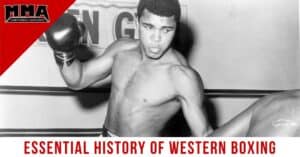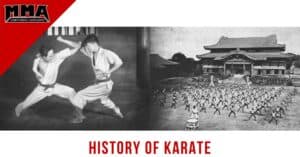All types of combat athletes and MMA fighters understand the benefit of improving upper body strength including grip strength. One of the best ways to do this, and without the need for excessive equipment, is by doing pull ups or chin-ups. There are many options for doing this exercise at home, at a gym, and in many different parks and outdoor recreation areas. Our certified coaches often utilize this affective upper body strength exercise for all different types of martial artists.
Pull-ups and chin-ups are two of the most effective upper body strength exercises. They target a wide range of muscles including the back, biceps, shoulders, and core. However, while these two exercises may seem similar, they have some key differences that affect the muscle groups emphasized and the difficulty of the exercise. Two additional an important strength exercises for martial arts competitors are the bench press and the deadlift.
The Difference Between Chin-Ups and Pull-Ups
Chin-ups and pull-ups are both exercises that involve pulling your body weight up towards a bar. However, the main difference between the two exercises is the grip. In chin-ups, your palms face towards you and your hands are positioned shoulder-width apart or closer. This grip is also known as a supinated grip.
In pull-ups, your palms face away from you, and your hands are positioned wider than shoulder-width apart. This grip is also known as a pronated grip. The grip width can vary from wide grip, parallel grip, and narrow grip.
Muscle Groups Emphasized with Different Grip Variations
The different grip variations in pull-ups and chin-ups can target different muscle groups.
Wide Grip Pull-Ups and Chin-Ups: These exercises target the lats, which are the large muscles that run down the sides of your back. Wide grip pull-ups and chin-ups also work the teres major, rhomboids, and posterior deltoids.
Parallel Grip Pull-Ups and Chin-Ups: These exercises target the biceps, triceps, and forearms. They also work the brachialis and brachioradialis muscles.
Narrow Grip Pull-Ups and Chin-Ups: These exercises target the biceps, triceps, and forearms. They also work the upper back muscles, including the rhomboids and trapezius.
Pros and Cons of Kipping Pull-Ups
Kipping pull-ups are a variation of pull-ups that involve using momentum to help you pull yourself up to the bar. This is achieved by using a swinging motion of the legs and hips to create momentum that helps lift the body towards the bar.
One of the main benefits of kipping pull-ups is that they allow you to perform more reps in a shorter amount of time. This makes them a popular exercise in CrossFit and other high-intensity workout programs.
However, there are also some drawbacks to kipping pull-ups. Because they rely on momentum, they place less emphasis on the muscles used in traditional pull-ups, such as the biceps and back. Kipping pull-ups also increase the risk of injury, especially if you don’t have proper form and control over the swinging motion.
Benefits of Partial Reps While Doing Pull-Ups
Partial reps involve only performing a portion of the full range of motion for an exercise. When doing pull-ups, this can involve starting from the top of the exercise and only lowering yourself partway down before pulling yourself back up.
Partial reps can help you build strength and endurance in specific parts of the exercise. For example, if you struggle with the top portion of a pull-up, doing partial reps from the top can help you build the necessary strength to perform a full pull-up.
Assisted Pull-Ups
Assisted pull-ups are a modification of the exercise that involve using a machine or a resistance band to help lift your bodyweight. This can make pull-ups easier for beginners or those who haven’t yet built up the necessary strength to perform a full pull-up.
Assisted pull-ups can help you build the necessary strength to eventually perform full pull-ups without assistance. However, it’s important to gradually decrease the amount of assistance you use over time to continue building strength and progress towards unassisted pull-ups.
Tips for Proper Form
To get the most out of pull-ups and chin-ups, it’s important to use proper form. Here are some tips to keep in mind when performing these exercises:
- Start with a dead hang: When beginning a pull-up or chin-up, start from a dead hang with your arms fully extended. This will ensure that you’re starting from a full range of motion and engaging all the necessary muscles.
- Engage your core: Keeping your core tight throughout the exercise can help stabilize your body and prevent swinging or other unwanted movements.
- Keep your shoulders down: It’s important to keep your shoulders down and away from your ears throughout the exercise to prevent unnecessary strain on your neck and upper back.
- Use a controlled motion: When pulling yourself up towards the bar, use a slow and controlled motion rather than jerking or swinging your body. This will help you engage the necessary muscles and reduce the risk of injury.
- Lower yourself slowly: When lowering yourself back down from the top of the exercise, use a slow and controlled motion to engage your muscles and prevent injury.
Pull-ups and chin-ups are highly effective exercises for building upper body strength for MMA fighters and all combat athletes. The difference between the two lies in the grip used, which can target different muscle groups. Kipping pull-ups can be a useful variation but may increase the risk of injury and reduce the emphasis on certain muscles. Partial reps and assisted pull-ups can be useful modifications for beginners or those building up strength. By using proper form and gradually increasing the difficulty of the exercise, anyone can work towards mastering pull-ups and chin-ups and reaping the benefits for their upper body strength and fitness.
As part of your certification training, you will learn a wide range of upper body exercises to gain functional strength for various martial arts competitions.
If you are interested in becoming a certified personal fitness trainer instead of a Certified MMA Conditioning Coach, you will want to review our parent company in NESTA and see the NCCA Accredited Personal Fitness Trainer Certification course.





